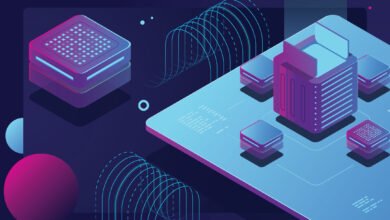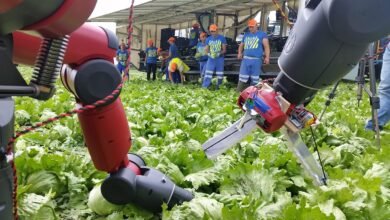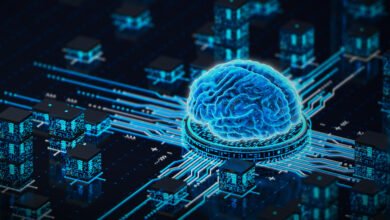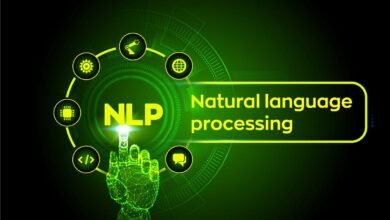
The convergence of artificial intelligence (AI) and the Internet of Things (IoT) has created a technological revolution that’s transforming how we interact with connected devices and process data. This powerful synergy, often termed AIoT (AI + IoT), represents more than just technological advancement—it’s fundamentally reshaping industries, optimizing operations, and driving unprecedented efficiency gains across diverse sectors.
In today’s hyperconnected world, IoT devices generate massive volumes of data every second, from smart thermostats monitoring home temperatures to industrial sensors tracking machine performance. However, raw data alone lacks actionable value. This is where AI enhances IoT performance by transforming overwhelming data streams into intelligent, automated responses that drive real-world outcomes. Machine learning algorithms analyze patterns, predict failures, and optimize resource allocation with precision that surpasses human capabilities.
The significance of AI-powered IoT systems extends far beyond simple automation. These intelligent networks enable predictive maintenance that prevents costly equipment failures, optimize energy consumption in smart buildings, and enhance security through anomaly detection. Smart devices equipped with AI capabilities can learn user preferences, adapt to environmental changes, and make autonomous decisions that improve performance while reducing operational costs.
From manufacturing floors utilizing predictive analytics to smart cities optimizing traffic flow, the integration of artificial intelligence with IoT infrastructure is creating more responsive, efficient, and intelligent systems. This transformation isn’t limited to large enterprises—small businesses and consumers alike benefit from AI-enhanced IoT solutions that deliver personalized experiences and improved operational efficiency.
This comprehensive exploration examines how AI enhances IoT performance across multiple dimensions, from real-time data processing to edge computing implementations. We’ll investigate practical applications, emerging trends, and the transformative potential of this technological convergence that’s shaping our digital future.
Understanding the AI-IoT Convergence
What Makes AI-Enhanced IoT Systems Superior?
Artificial intelligence fundamentally transforms how IoT devices collect, process, and act upon data. Traditional IoT systems follow predetermined rules and thresholds, responding reactively to specific conditions. However, AI-powered IoT networks leverage machine learning to identify patterns, predict outcomes, and make proactive decisions that continuously improve system performance.
The core advantage lies in AI’s ability to process vast amounts of IoT data analytics in real-time. Smart sensors equipped with AI algorithms can distinguish between normal operational variations and genuine anomalies, reducing false alerts while ensuring critical issues receive immediate attention. This intelligent filtering significantly enhances IoT performance by minimizing unnecessary interventions and focusing resources on actual problems.
Edge computing integration represents another crucial advancement where AI enhances IoT performance. By processing data locally rather than sending everything to cloud servers, edge-enabled IoT systems achieve faster response times, reduced bandwidth consumption, and improved reliability. Machine learning models running on edge devices enable instantaneous data-driven decisions without relying on constant internet connectivity.
The Data Processing Revolution
IoT data analytics powered by AI transforms the traditional data processing paradigm from reactive to predictive. Artificial intelligence algorithms analyze historical patterns, identify correlations, and generate insights that enable proactive system optimization. This shift from reactive maintenance to predictive analytics represents a fundamental improvement in how organizations manage their IoT infrastructure.
Real-time processing capabilities allow AI-enhanced IoT systems to respond to changing conditions instantly. Whether monitoring industrial equipment performance or optimizing smart building energy consumption, AI algorithms continuously adjust parameters based on current conditions and predicted future states. This dynamic optimization ensures smart devices operate at peak efficiency while minimizing resource waste.
The scalability benefits of AI-powered IoT systems become evident when managing thousands of connected devices. Traditional monitoring approaches become unwieldy at scale, but machine learning algorithms can simultaneously analyze data from countless sensors, identifying patterns and anomalies across entire networks. This comprehensive monitoring capability ensures consistent performance optimization across large-scale IoT deployments.
Real-Time Analytics and Decision Making
Transforming Data into Actionable Insights
Real-time data processing represents the cornerstone of how AI enhances IoT performance. Modern IoT systems generate continuous data streams that require immediate analysis to extract actionable insights. Artificial intelligence algorithms process this information instantaneously, enabling smart devices to make autonomous decisions that optimize performance without human intervention.
The power of real-time analytics becomes particularly evident in industrial applications where predictive analytics can prevent costly equipment failures. AI-powered sensors monitor vibration patterns, temperature fluctuations, and performance metrics, identifying subtle changes that indicate potential problems. This early detection capability allows maintenance teams to address issues before they escalate into expensive breakdowns.
Machine learning models continuously refine their accuracy by learning from new data patterns. This adaptive capability ensures IoT data analytics become more precise over time, reducing false positives while improving genuine threat detection. The result is a self-improving system that becomes more valuable as it processes more data.
Enhanced Automation Through Intelligent Processing
AI-enhanced automation goes beyond simple rule-based responses to create truly intelligent systems that adapt to changing conditions. Smart devices equipped with advanced artificial intelligence can analyze multiple variables simultaneously, making complex decisions that optimize overall system performance. This sophisticated decision-making capability distinguishes modern IoT solutions from traditional automated systems.
Edge computing plays a crucial role in enabling rapid decision-making by processing data locally rather than relying on distant cloud servers. This architectural approach reduces latency and ensures IoT devices can respond immediately to critical conditions. Local AI processing also enhances system reliability by maintaining functionality even during network interruptions.
The integration of natural language processing and computer vision technologies further expands the capabilities of AI-powered IoT systems. Security cameras can identify unusual activities, voice assistants can interpret complex user commands, and visual inspection systems can detect quality issues with human-level accuracy. These advanced capabilities demonstrate how AI enhances IoT performance across diverse application domains.
Predictive Maintenance and Performance Optimization
Revolutionizing Equipment Management
Predictive maintenance represents one of the most impactful ways AI enhances IoT performance in industrial settings. Traditional maintenance approaches rely on scheduled intervals or reactive responses to equipment failures, both of which can be costly and inefficient. AI-powered predictive analytics analyzes sensor data to determine optimal maintenance timing, preventing failures while avoiding unnecessary servicing.
Machine learning algorithms trained on historical equipment data can identify subtle patterns that precede failures. Smart sensors monitor key performance indicators such as vibration, temperature, pressure, and power consumption, feeding this data to AI models that assess equipment health in real-time. This continuous monitoring enables data-driven decisions about when maintenance is actually needed.
The economic benefits of AI-enhanced predictive maintenance are substantial. Organizations report 20-30% reductions in maintenance costs and 50-70% decreases in equipment downtime when implementing IoT-based predictive analytics. These improvements stem from AI’s ability to optimize maintenance schedules, extend equipment lifecycles, and prevent catastrophic failures that disrupt operations.
Performance Optimization Across Systems
AI-powered optimization extends beyond individual equipment to encompass entire systems and processes. Smart buildings utilize AI to optimize energy consumption by analyzing occupancy patterns, weather conditions, and utility rates to automatically adjust heating, cooling, and lighting systems. This intelligent resource allocation can reduce energy costs by 15-25% while maintaining optimal comfort levels.
Manufacturing facilities leverage IoT data analytics to optimize production schedules, quality control processes, and supply chain logistics. Artificial intelligence analyzes production data, equipment availability, and demand forecasts to maximize throughput while minimizing waste. This holistic optimization approach demonstrates how AI enhances IoT performance across complex interconnected systems.
Predictive analytics also enables proactive quality management by identifying conditions that lead to product defects. Smart sensors monitor production parameters in real-time, allowing AI algorithms to detect deviations that could impact quality before defective products are manufactured. This proactive approach reduces waste, improves customer satisfaction, and maintains consistent product quality.
Smart Sensors and Edge Computing
Intelligent Data Collection at the Source
Smart sensors represent the foundation of AI-enhanced IoT systems, providing the high-quality data necessary for effective machine learning and predictive analytics. Unlike traditional sensors that simply collect and transmit raw data, AI-powered sensors include local processing capabilities that enable intelligent data filtering, pattern recognition, and preliminary analysis at the point of collection.
The integration of artificial intelligence directly into sensor hardware creates more efficient and responsive IoT devices. These intelligent sensors can distinguish between relevant and irrelevant data, transmitting only meaningful information to reduce network bandwidth requirements and storage costs. This selective data transmission ensures IoT data analytics focuses on actionable insights rather than processing unnecessary information.
Edge computing architecture enables smart sensors to perform complex calculations locally, reducing latency and improving response times. Manufacturing sensors can detect quality issues and trigger immediate corrective actions, security systems can identify threats and alert authorities instantly, and environmental monitors can adjust system parameters autonomously. This local processing capability significantly enhances IoT performance by enabling rapid autonomous responses.
Distributed Intelligence Networks
The deployment of AI-enabled edge computing creates distributed intelligence networks where processing power exists throughout the system rather than being centralized in cloud servers. This architectural approach improves system resilience, reduces communication overhead, and enables more sophisticated real-time processing capabilities across IoT networks.
Machine learning models optimized for edge deployment can run efficiently on resource-constrained devices while maintaining high accuracy. These compact AI models enable smart devices to perform complex tasks such as image recognition, natural language processing, and predictive analysis without requiring constant cloud connectivity. This independence enhances system reliability and reduces operational costs.
The scalability benefits of distributed AI processing become evident in large-scale IoT deployments. Rather than overwhelming central servers with data from thousands of devices, edge-based processing distributes the computational load across the network. This approach enables massive IoT systems to maintain high performance while managing exponentially growing data volumes.
Industry Applications and Case Studies
Manufacturing and Industrial Automation
Manufacturing represents one of the most mature applications of AI-enhanced IoT systems, with implementations spanning from small-scale production lines to massive industrial complexes. Smart factories utilize IoT sensors and artificial intelligence to optimize production efficiency, quality control, and equipment maintenance simultaneously.
Predictive analytics in manufacturing can identify equipment problems weeks before they occur, enabling scheduled maintenance during planned downtime rather than emergency repairs that halt production. A major automotive manufacturer reported a 25% reduction in unplanned downtime after implementing AI-powered predictive maintenance across their production facilities. Machine learning algorithms analyzed vibration patterns, temperature readings, and power consumption data to predict bearing failures, motor problems, and other equipment issues.
Quality control processes benefit significantly from AI-enhanced computer vision systems that can inspect products with greater accuracy and consistency than human operators. Smart cameras equipped with deep learning algorithms can detect microscopic defects, dimensional variations, and surface irregularities that might be missed by traditional inspection methods. This automated quality assurance improves product consistency while reducing labor costs and inspection time.
Smart Cities and Urban Infrastructure
Smart city initiatives demonstrate how AI enhances IoT performance across complex urban systems involving transportation, energy, water management, and public safety. Cities implementing comprehensive IoT networks with artificial intelligence capabilities report significant improvements in operational efficiency, resource utilization, and citizen satisfaction.
Traffic management systems exemplify the power of AI-powered IoT solutions in urban environments. Smart traffic sensors collect real-time data about vehicle flow, pedestrian activity, and road conditions, while machine learning algorithms optimize signal timing to reduce congestion and emissions. Los Angeles implemented an AI-driven traffic management system that reduced travel times by 12% and emissions by 9% through intelligent signal coordination.
Energy management in smart cities benefits from AI-enhanced grid optimization that balances supply and demand in real-time. IoT sensors throughout the electrical grid monitor power consumption, generation, and distribution, enabling predictive analytics to anticipate demand patterns and optimize energy distribution. This intelligent management reduces costs, improves reliability, and supports integration of renewable energy sources.
Healthcare and Remote Monitoring
Healthcare applications of AI-enhanced IoT demonstrate the technology’s potential for improving patient outcomes while reducing costs. Smart medical devices equipped with artificial intelligence can monitor patient vital signs continuously, detect emergencies automatically, and provide personalized treatment recommendations based on individual health patterns.
Wearable IoT devices combined with machine learning algorithms enable continuous health monitoring that can identify potential medical issues before symptoms become apparent. AI-powered analysis of heart rate variability, sleep patterns, activity levels, and other biometric data can predict health risks and recommend preventive measures. This proactive healthcare approach can reduce hospital readmissions and improve long-term patient outcomes.
Remote patient monitoring systems utilize IoT sensors and artificial intelligence to enable healthcare providers to monitor patients with chronic conditions from their homes. Smart devices collect vital signs, medication compliance data, and symptom information, while AI algorithms identify concerning patterns that require medical intervention. This approach improves patient quality of life while reducing healthcare costs through early intervention and reduced hospital stays.
Data Security and Privacy in AI-IoT Systems
Enhanced Security Through Intelligent Monitoring
AI-enhanced security represents a critical advantage of intelligent IoT systems, as artificial intelligence can detect and respond to threats more rapidly and accurately than traditional security approaches. Machine learning algorithms analyze network traffic patterns, device behavior, and user activities to identify anomalies that might indicate security breaches or cyberattacks.
Smart security systems can differentiate between normal operational variations and genuine security threats, reducing false alarms while ensuring real threats receive immediate attention. AI-powered intrusion detection systems learn normal behavior patterns for each IoT device and network segment, automatically flagging unusual activities that could indicate compromise or malicious behavior.
The scalability of AI-driven security monitoring becomes crucial in large IoT deployments where thousands of devices must be monitored simultaneously. Artificial intelligence can analyze security data from entire networks in real-time, identifying coordinated attacks or systematic vulnerabilities that might be missed when monitoring individual devices independently.
Privacy Protection in Connected Environments
Privacy protection in AI-enhanced IoT systems requires sophisticated approaches that balance functionality with data protection. Edge computing architectures enable sensitive data processing to occur locally rather than being transmitted to external servers, reducing privacy risks while maintaining system performance. This local processing approach ensures personal information remains on user-controlled devices whenever possible.
AI-powered data anonymization techniques can remove personally identifiable information from IoT data analytics while preserving the statistical properties necessary for effective machine learning. These intelligent privacy protection methods enable organizations to benefit from IoT data insights without compromising individual privacy rights or regulatory compliance.
Smart consent management systems utilize artificial intelligence to provide users with clear, understandable privacy controls that adapt to their preferences and usage patterns. Rather than overwhelming users with complex privacy settings, AI-enhanced interfaces can present relevant privacy options contextually while maintaining transparency about data collection and usage practices.
Future Trends and Emerging Technologies
5G and Advanced Connectivity
The rollout of 5G networks significantly amplifies how AI enhances IoT performance by providing the high-speed, low-latency connectivity necessary for advanced real-time applications. 5G-enabled IoT devices can transmit larger amounts of data more rapidly, enabling more sophisticated AI processing and faster autonomous responses to changing conditions.
Ultra-reliable low-latency communication (URLLC) capabilities of 5G networks enable mission-critical IoT applications that require instantaneous responses. Autonomous vehicles, remote surgery systems, and industrial control applications can leverage AI-powered decision making with the confidence that critical commands will be transmitted and executed without delay.
Network slicing technology allows 5G networks to provide customized connectivity characteristics for different types of AI-enhanced IoT applications. High-bandwidth applications such as smart city video analytics can receive dedicated network resources, while low-power IoT sensors can utilize optimized connectivity that extends battery life and reduces costs.
Quantum Computing Integration
Quantum computing represents an emerging technology that could revolutionize AI-enhanced IoT systems by enabling exponentially more complex machine learning algorithms and optimization problems. While still in early development stages, quantum-enhanced AI could solve optimization challenges that are computationally infeasible for classical computers.
Quantum machine learning algorithms could enable IoT systems to process exponentially larger datasets and identify patterns that are impossible to detect with current technology. This capability could unlock new applications in predictive analytics, optimization, and pattern recognition that significantly expand the potential of AI-powered IoT solutions.
The integration of quantum networking with IoT infrastructure could provide unprecedented security capabilities through quantum encryption and quantum key distribution. These quantum-enhanced security features would make AI-IoT systems virtually immune to many types of cyberattacks, enabling deployment in the most security-sensitive applications.
Autonomous AI Systems
The evolution toward autonomous AI systems represents the next frontier in how artificial intelligence enhances IoT performance. These systems will be capable of self-configuration, self-optimization, and self-healing without human intervention, creating IoT networks that continuously improve their performance through machine learning and adaptation.
Autonomous IoT management systems will utilize AI algorithms to automatically deploy software updates, optimize network configurations, and allocate computational resources based on changing requirements. This self-managing capability will reduce operational costs while ensuring IoT systems maintain peak performance as conditions evolve.
Swarm intelligence approaches will enable large numbers of IoT devices to coordinate their activities autonomously, creating emergent behaviors that optimize overall system performance. These distributed intelligence networks will be capable of complex tasks such as environmental monitoring, disaster response, and infrastructure management without centralized control.
Implementation Strategies and Best Practices
Planning AI-IoT Integration
Successful implementation of AI-enhanced IoT systems requires comprehensive planning that addresses technical requirements, organizational capabilities, and business objectives simultaneously. Organizations must assess their existing IoT infrastructure, identify opportunities where artificial intelligence can provide the greatest value, and develop phased implementation strategies that build capability gradually.
Data quality assessment represents a critical first step in AI-IoT implementation, as machine learning algorithms require high-quality, consistent data to function effectively. Organizations should evaluate their current IoT data collection practices, identify gaps in data coverage or quality, and implement improvements before deploying AI analytics capabilities.
Skills development and organizational change management are essential components of successful AI-IoT transformation. Teams must understand how artificial intelligence enhances traditional IoT operations and develop the capabilities necessary to design, implement, and maintain AI-powered systems. This often requires combining IoT technical expertise with data science and machine learning capabilities.
Technology Selection and Architecture
Choosing appropriate technologies for AI-enhanced IoT implementations requires careful consideration of performance requirements, scalability needs, and integration capabilities. Edge computing platforms should be selected based on their ability to run AI models efficiently while meeting real-time processing requirements. Cloud platforms must provide the machine learning tools and data analytics capabilities necessary for training and updating AI models.
Interoperability standards become crucial when integrating AI capabilities with existing IoT infrastructure. Organizations should prioritize technologies that support open standards and provide APIs for integration with other systems. This approach ensures AI-IoT systems can evolve and integrate with future technologies without requiring complete replacement.
Security architecture must be designed from the beginning to protect AI-enhanced IoT systems from both traditional cybersecurity threats and AI-specific vulnerabilities. This includes implementing secure communication protocols, access controls, data encryption, and AI model protection mechanisms that prevent adversarial attacks or model theft.
Measuring Success and ROI
Establishing appropriate metrics for AI-IoT performance enables organizations to measure success and demonstrate return on investment. Key performance indicators should include both technical metrics such as prediction accuracy, system uptime, and response times, as well as business metrics such as cost savings, efficiency improvements, and revenue generation.
Baseline measurement before AI implementation provides the reference point necessary to quantify improvements. Organizations should document current performance levels, operational costs, and efficiency metrics to enable clear comparison with post-implementation results. This baseline data also helps identify which applications of artificial intelligence provide the greatest value.
Continuous monitoring and performance optimization ensure AI-enhanced IoT systems maintain their effectiveness over time. AI models require regular updating and retraining as conditions change, while IoT infrastructure must be monitored for performance degradation or security vulnerabilities. This ongoing attention ensures long-term success and maximum return on AI-IoT investments.
Conclusion
The integration of artificial intelligence with Internet of Things technology represents a transformative force that is fundamentally changing how organizations collect, process, and act upon data from connected devices. AI enhances IoT performance across multiple dimensions, from predictive maintenance and real-time optimization to intelligent automation and enhanced security. The convergence of machine learning algorithms, smart sensors, edge computing, and advanced analytics creates systems that not only respond to current conditions but predict and prevent future problems while continuously optimizing their own performance. As 5G networks, quantum computing, and autonomous AI systems mature, the potential for AI-powered IoT solutions will expand exponentially, enabling new applications and capabilities that we can barely imagine today. Organizations that successfully implement AI-enhanced IoT systems will gain significant competitive advantages through improved efficiency, reduced costs, enhanced customer experiences, and the ability to make data-driven decisions with unprecedented speed and accuracy. The future belongs to those who can harness the power of intelligent connected devices to transform data into actionable insights and autonomous actions that drive business success in our increasingly digital world.











